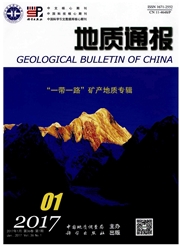

 中文摘要:
中文摘要:
有宏观的石块的二根新地平线在 DoushantuoFormation 被报导, Ediacaran 系统,从 Yangtze 峡区域。石块在 Sandouping 镇在新节在 Doushantuo 形成的更低、中间的黑页岩被发现, ZiguiCounty,湖北省。新宏观的集合包括 Chuaria 和 Tawuia,并且发生在“著名 Miaohe 生物区系”下面。这些石块显示在 Nantuo 冰川期以后, macroscopicmuiticellular 有机体逐渐地在丰富和差异增加了。简单,象 chuarids 那样的 discoidalcarbonaceous 压缩在 theDoushantuo 舞台的起始的宏石块集合是在场的。这个集合是由更多样的 Miaohe 宏石块的最后代替的编辑,包括明白地分叉的形式,在最高 Doushantuo 形成。从在 Yangtze 峡区域的 Doushantuo 形成的碳的压缩宏石块的新发现为关联提供新证据在南部的中国的近来 Neoprotero 动物的继任。
 英文摘要:
英文摘要:
Two new horizons with macroscopic fossils are reported in the Doushantuo Formation, Ediacaran System, from the Yangtze Gorges area. The fossils were discovered in the lower and middle black shales of the Doushantuo Formation in the new section at Sandouping Town, Zigui County, Hubei Province. The new macroscopic assemblages include Chuaria and Tawuia, and occur below the wellknown "Miaohe Biota". These fossils indicate that after the Nantuo ice age, macroscopic multicellular organisms gradually increased in abundance and diversity. Simple, discoidal carbonaceous compressions such as chuarids are present in the initial macrofossil assemblage of the Doushantuo Stage. This assemblage was eventually replaceded by the more diverse Miaohe macrofossils, including unambiguously branching forms, in the uppermost Doushantuo Formation. The new discovery of carbonaceous compression macrofossils from the Doushantuo Formation in the Yangtze Gorges area provides new evidence for the correlation of late Neoproterozoic successions in southern China.
 同期刊论文项目
同期刊论文项目
 同项目期刊论文
同项目期刊论文
 New discovery of macroscopic carbonaceous compressions in Sinian Doushantuo Formation, eastern Yangt
New discovery of macroscopic carbonaceous compressions in Sinian Doushantuo Formation, eastern Yangt Silicified and Phosphatized Tianzhushania from the Neoproterozoic Doushantuo phosphorites at Weng’an
Silicified and Phosphatized Tianzhushania from the Neoproterozoic Doushantuo phosphorites at Weng’an U-Pb zircon age from the base of the Ediacaran Doushantuo Formation in the Yangtze Gorges, South Chi
U-Pb zircon age from the base of the Ediacaran Doushantuo Formation in the Yangtze Gorges, South Chi New Data of Phosphatized Acritarchs from the Ediacarian Doushantuo Formation at Weng’an, Guizhou Pro
New Data of Phosphatized Acritarchs from the Ediacarian Doushantuo Formation at Weng’an, Guizhou Pro 期刊信息
期刊信息
